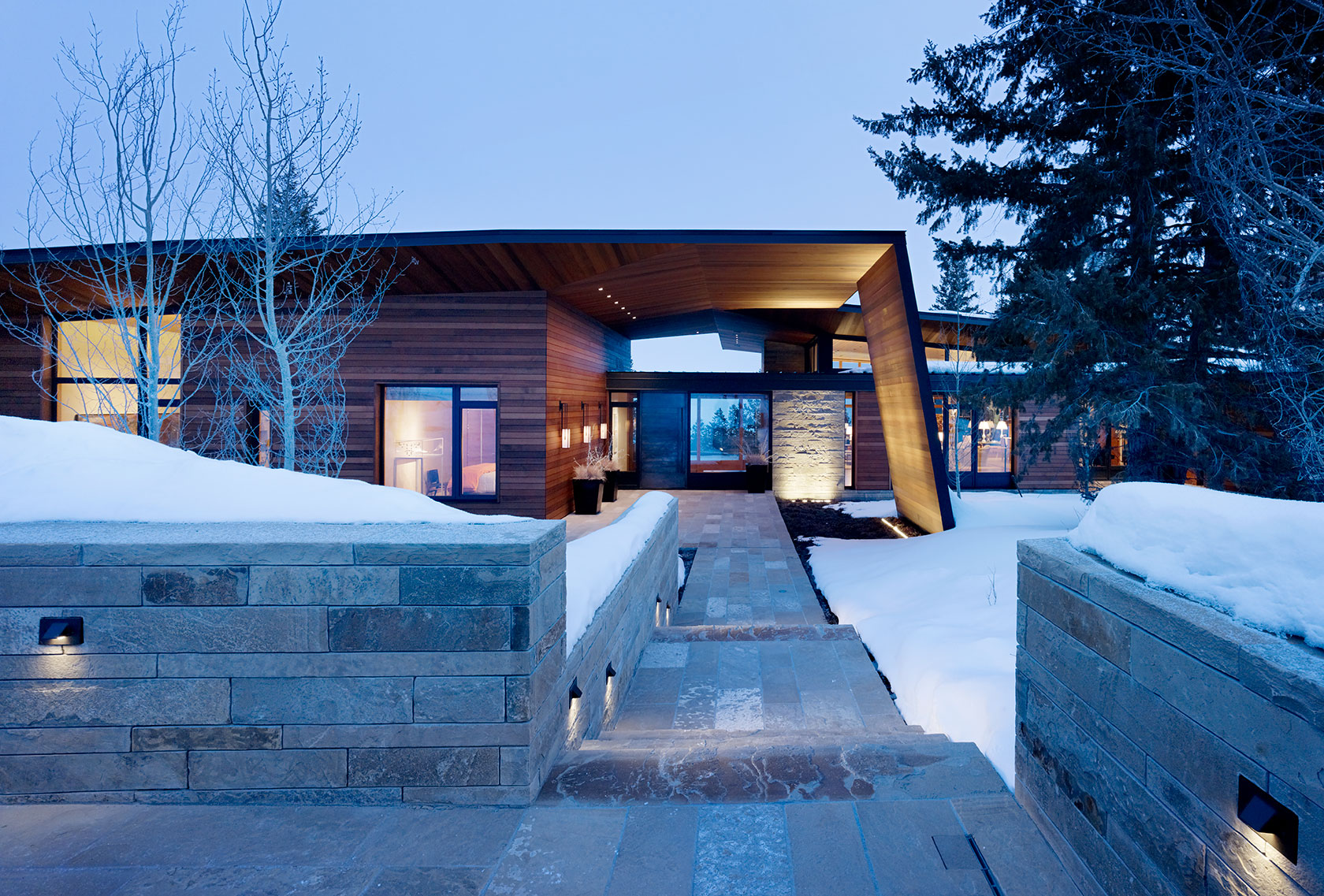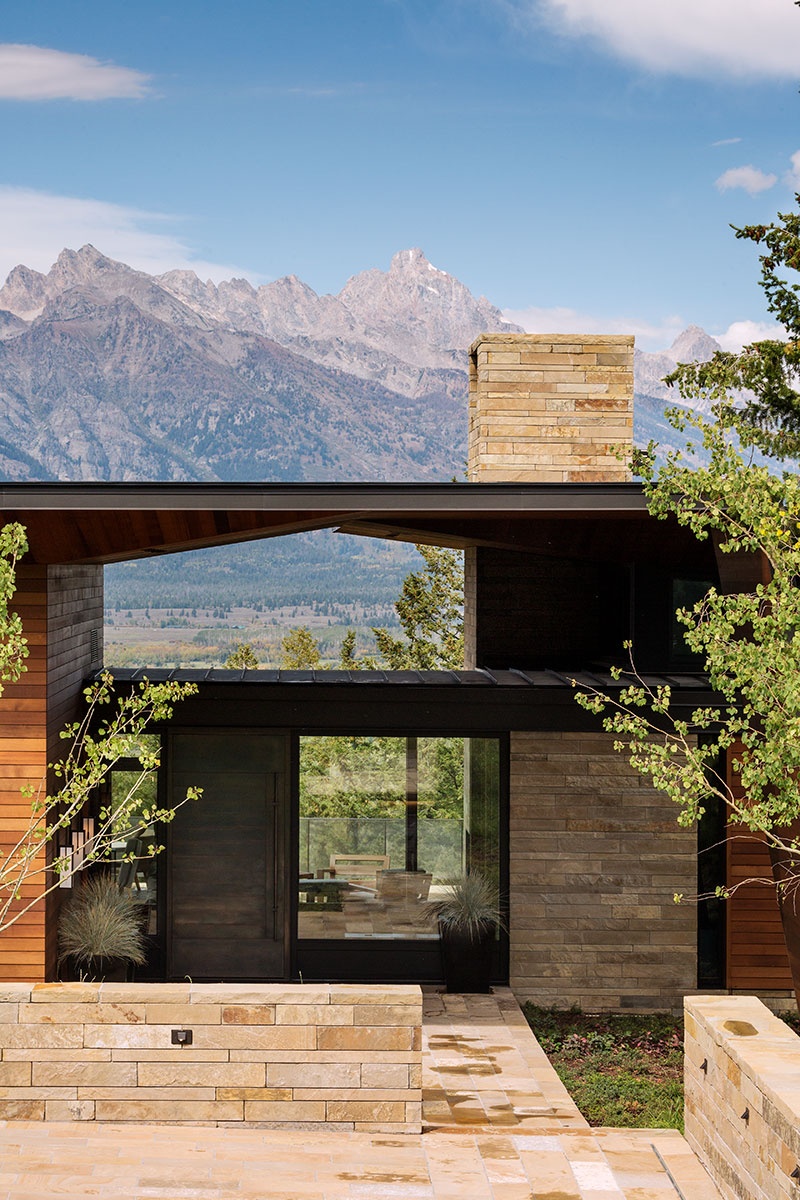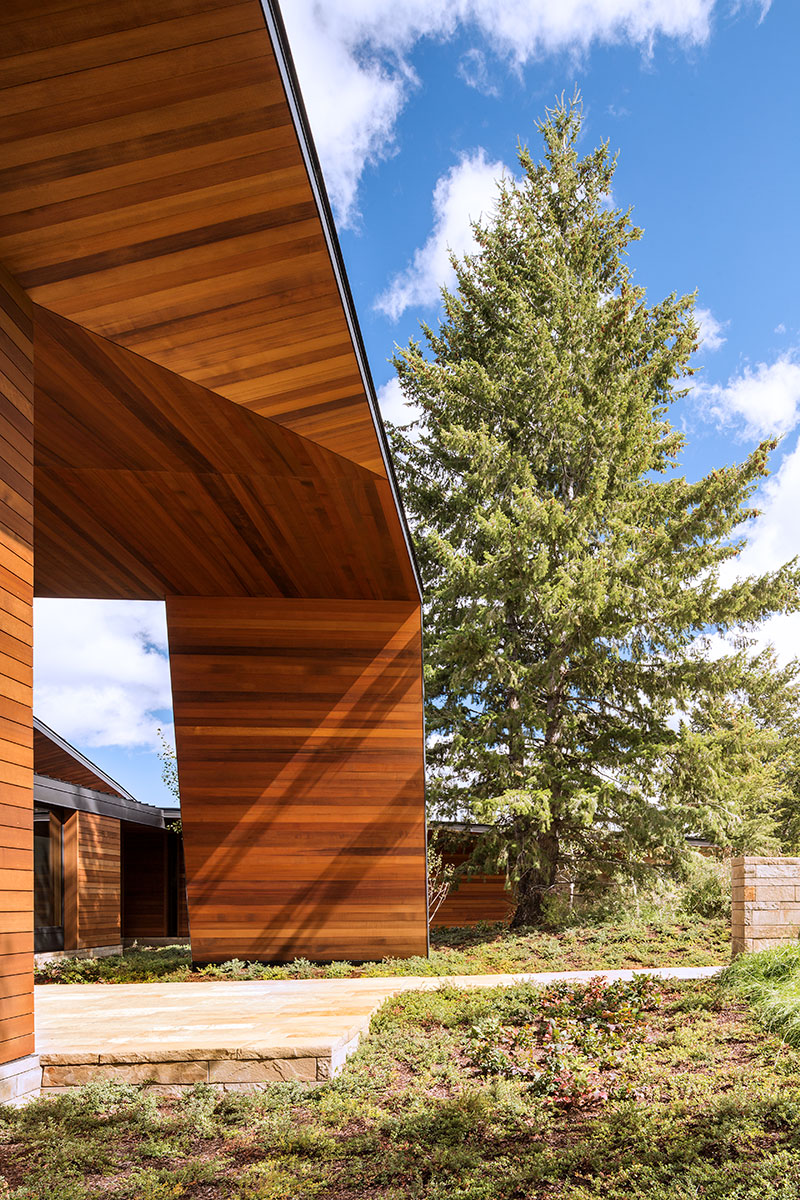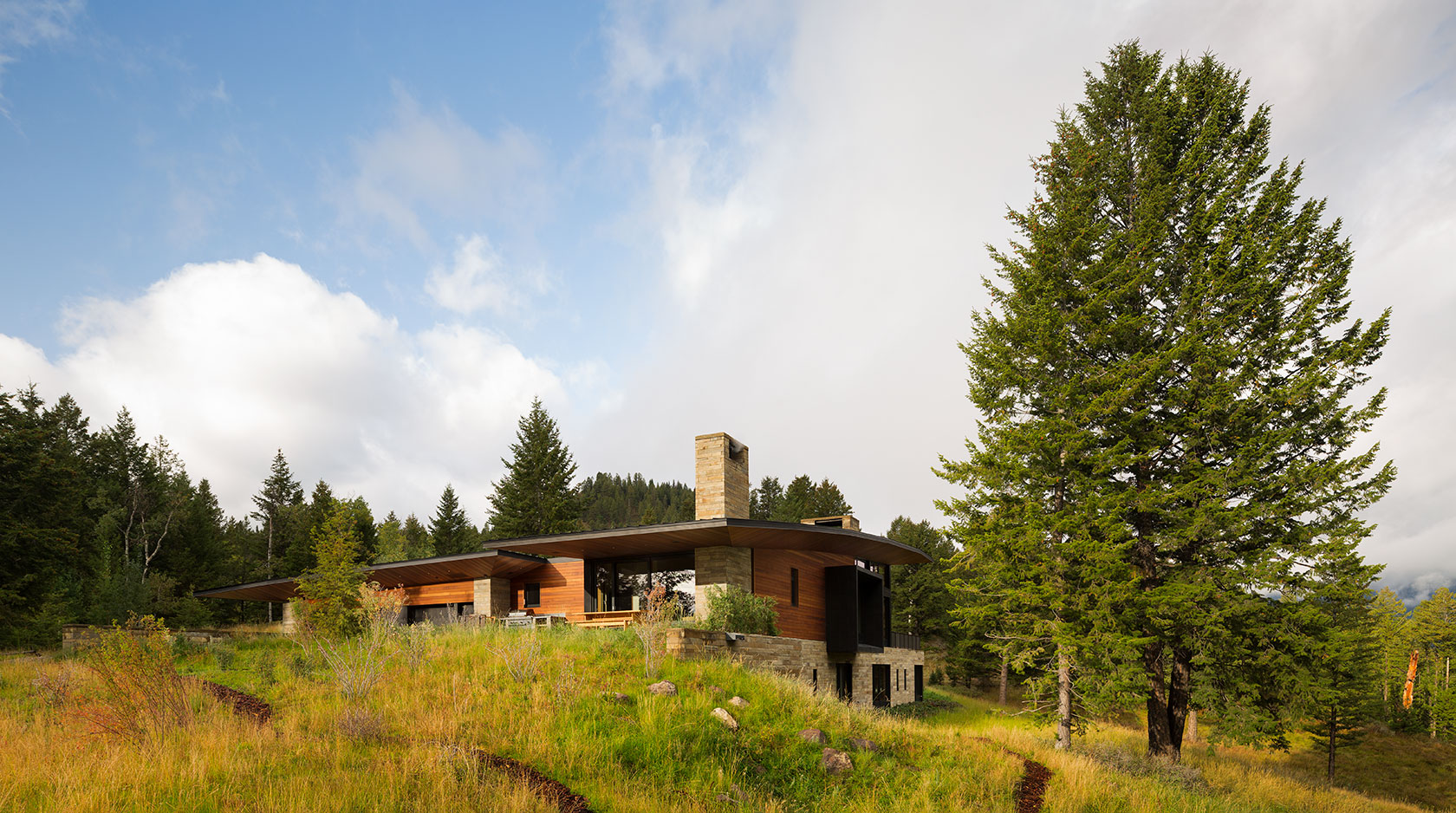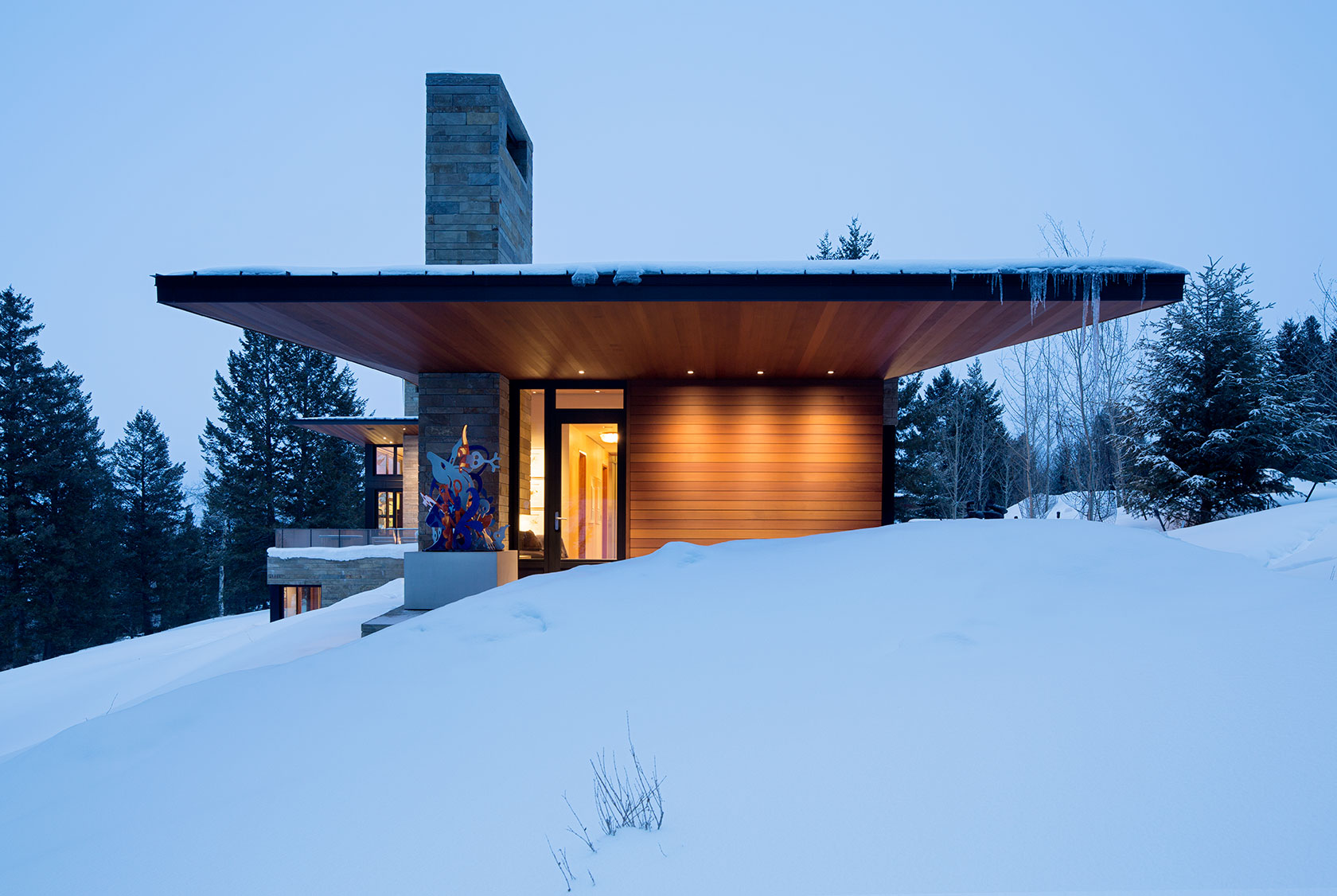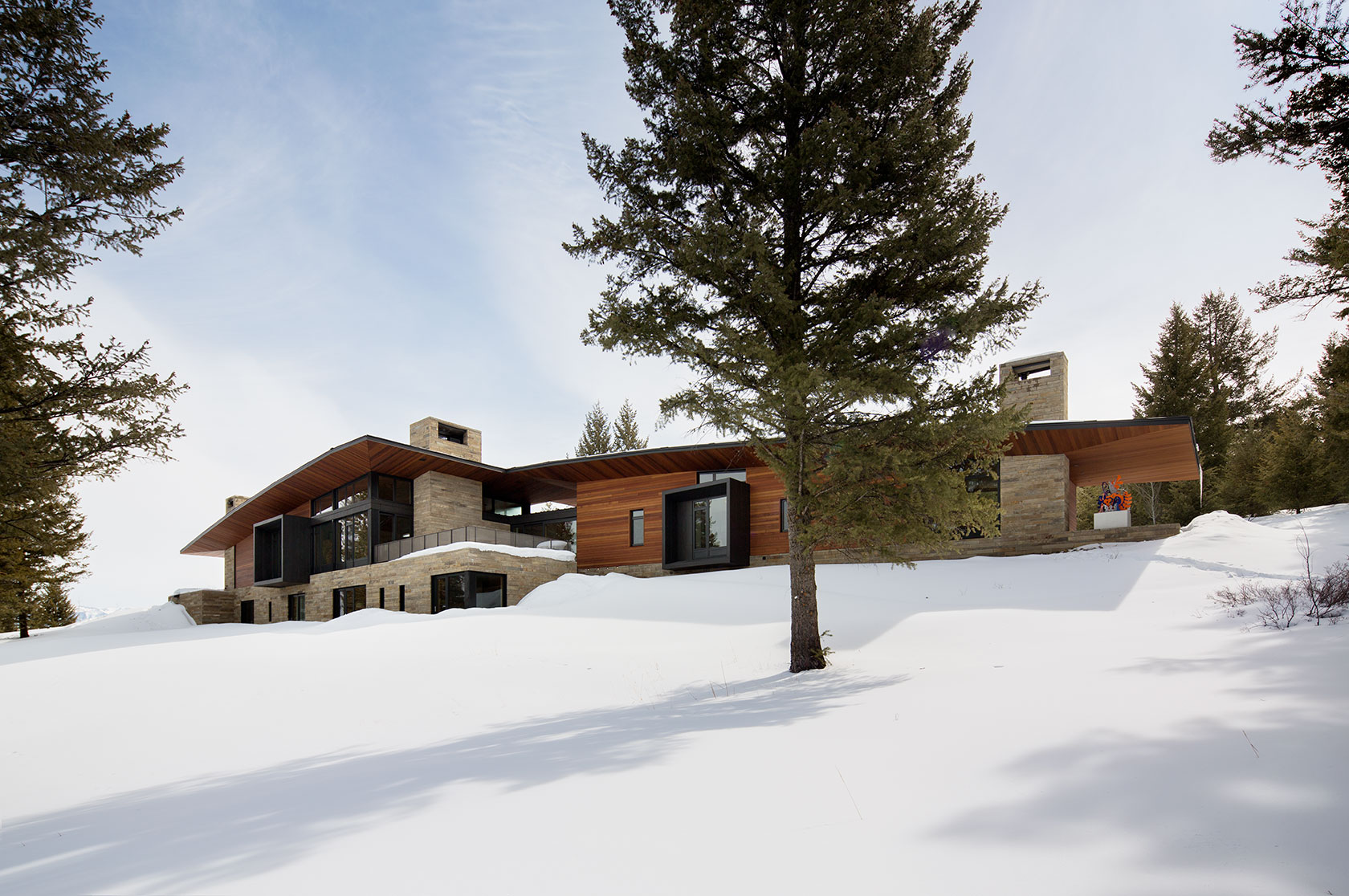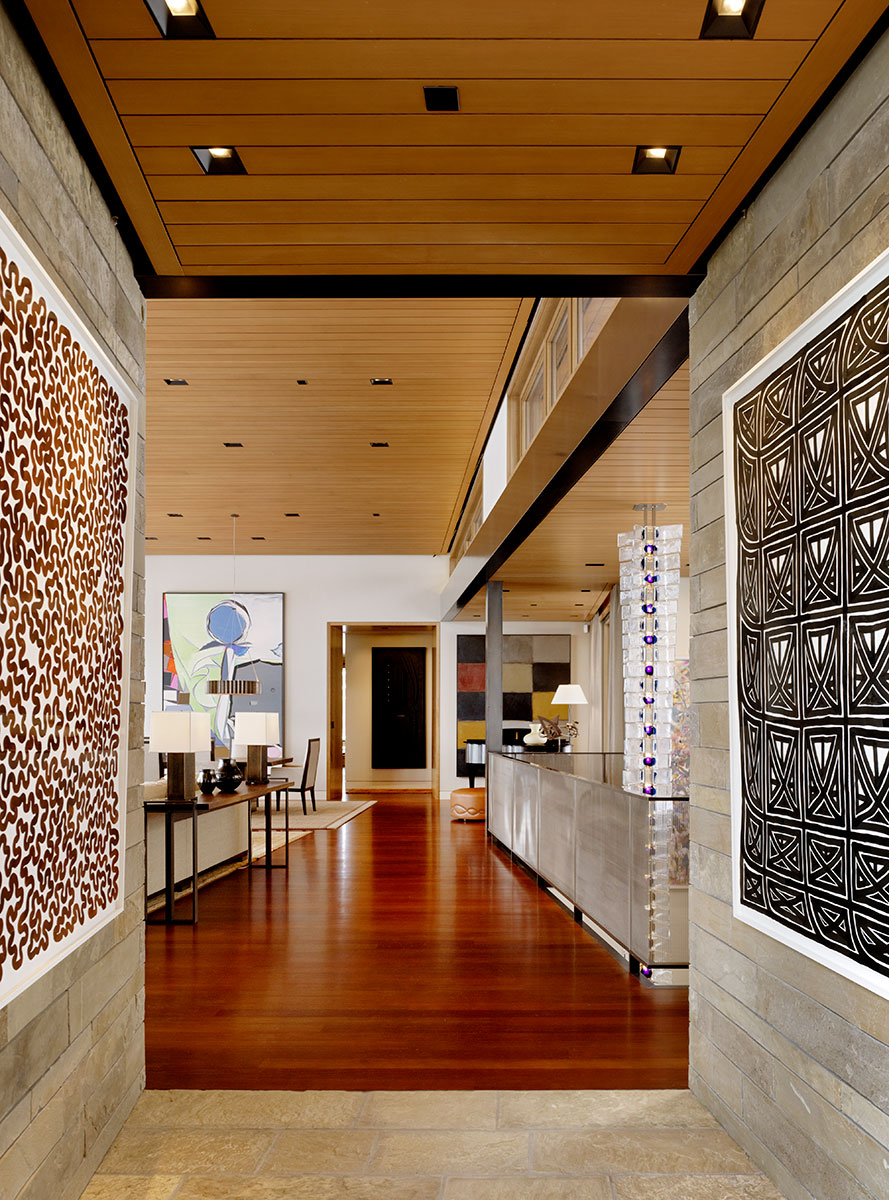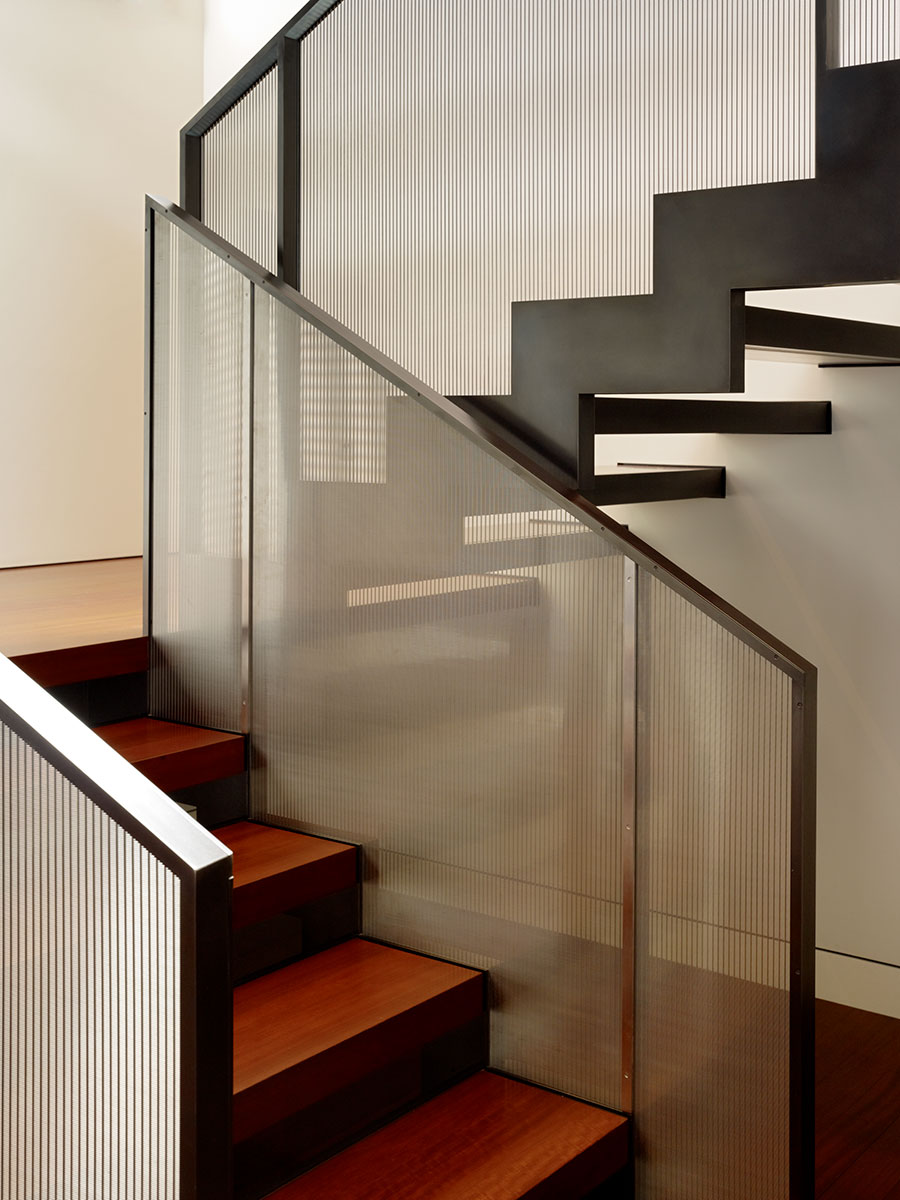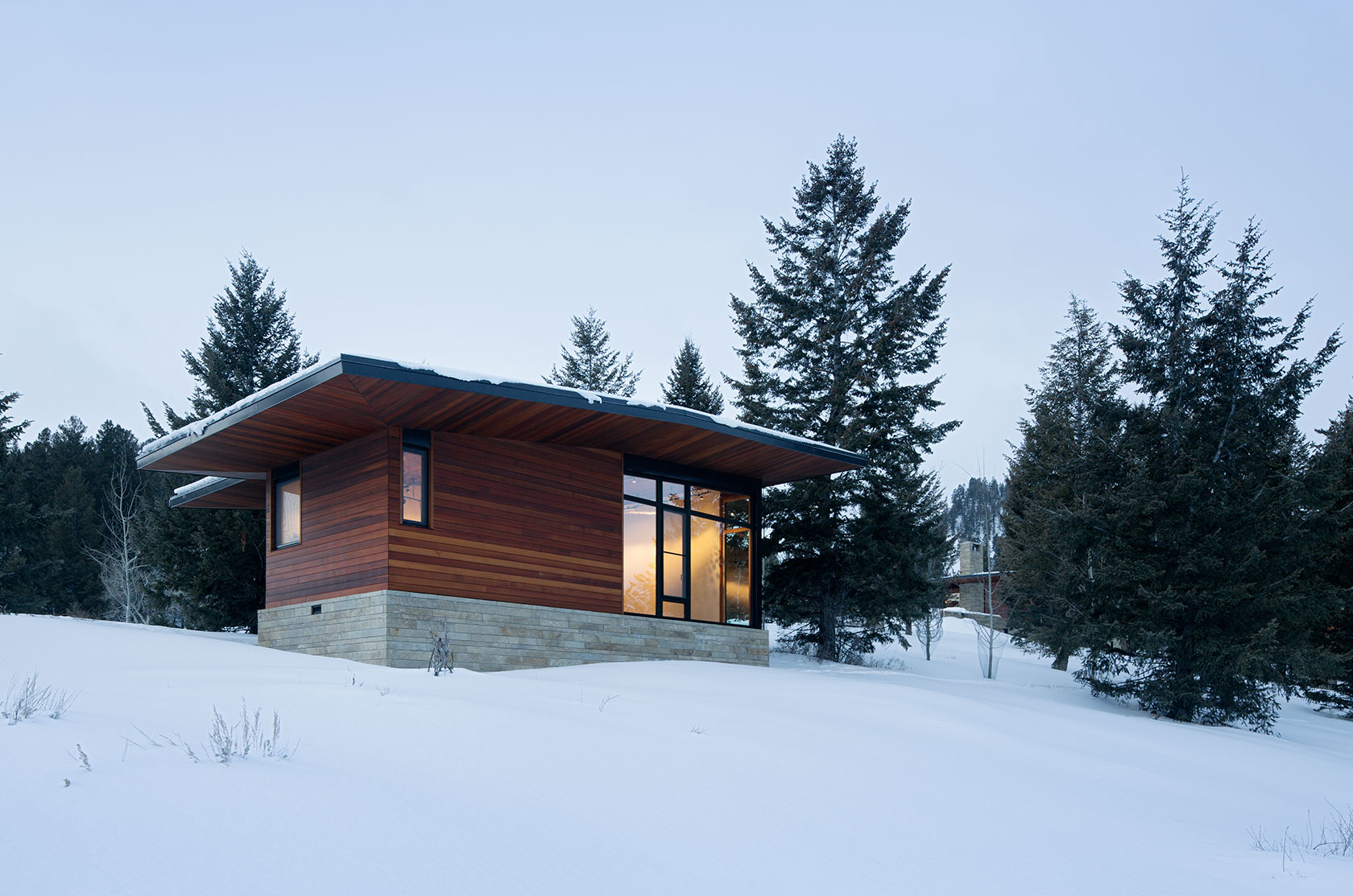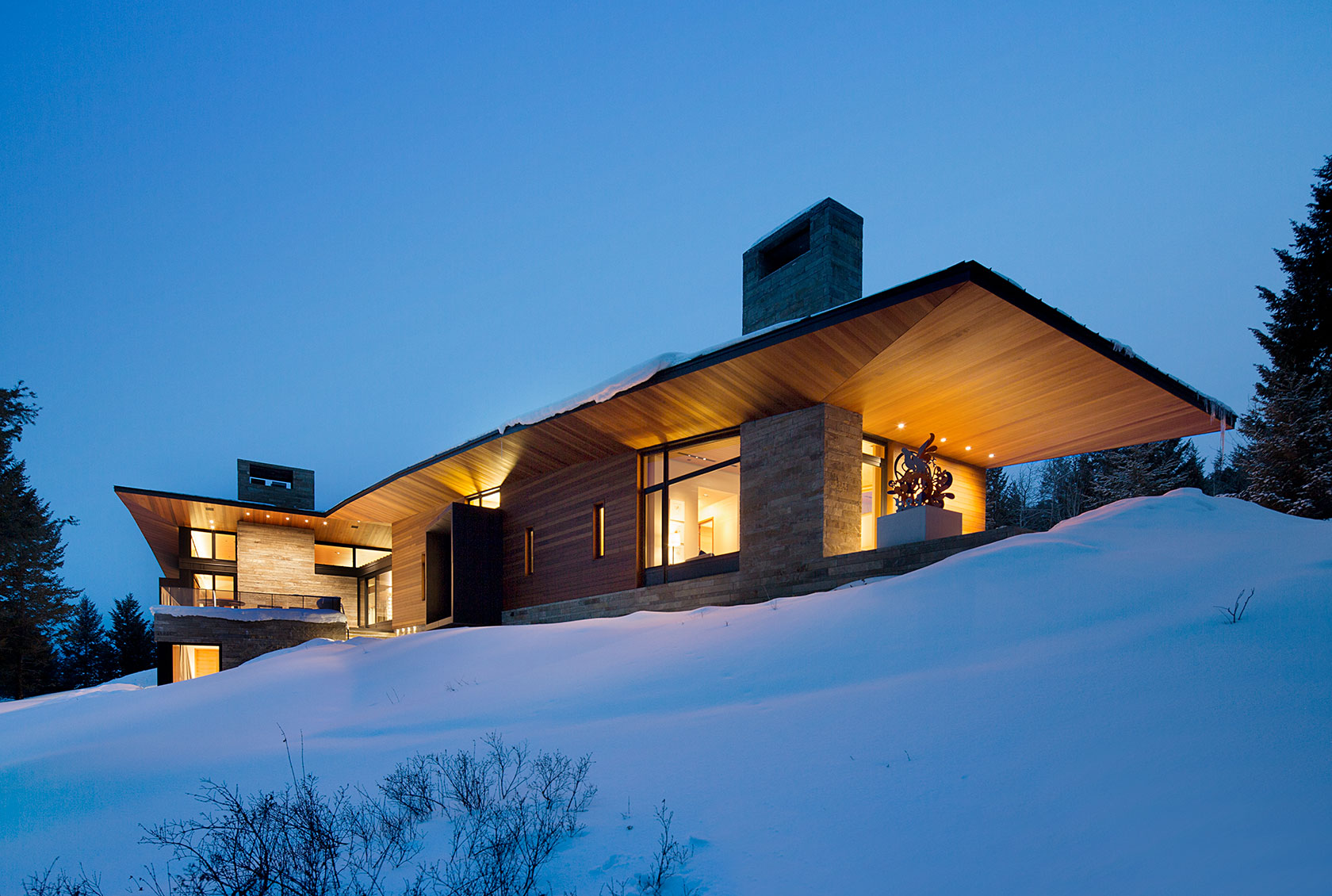An extraordinary 38-acre property located on a butte overlooking the confluence of the Snake and Gros Ventre Rivers commands dramatic sweeping vistas of the Teton and Gros Ventre Mountain Ranges. Positioned high above the valley floor, the house serves as a lookout to Grand Teton and Yellowstone National Parks.
The client, a collector of contemporary art and sculpture, desired architecture with character and materiality that respects western tradition but embraces clean, abstract, light-filled spaces.
The design language for the art-focused compound was informed by basic notions of shelter. The home maintains a modest profile and integrates with its site through a series of volumes that hug the natural slope. By organizing the program in this way, individual spaces open to varied views and access points, from vast panoramas to intimate, secluded experiences within the trees. A singular roof form arcs over the program, springing from and returning to the topography of the site. The roof profile mimics the soft shape of the butte and provides a series of broad protective canopies, culminating in a heroic porch at the apex of its trajectory, where a view of the Grand Teton is framed within the architecture.
The building rests on a plinth of regionally quarried stone, expressed in taut, banded patterns that emphasize the horizontal lines of the compound and ground the scheme in the site. A fabric of cedar and glass wraps the upper level and knits together the zinc roof and stone base. Cedar inhabits the underside of the significant overhangs while zinc projections punctuate the elevations. Inside the home, ample glazing invites light and lightness to diffuse the mass of the program. A reductive palette of wood, stone, and plaster becomes a subdued background allowing iconic views and the extensive art program to dominate the character of the interior.
The architectural language is echoed in a separate art studio structure, a folly located at the forest edge, a short distance from the main house. In its entirety, the architecture of the compound defers to place and becomes a direct symbol for shelter in the harsh western landscape.
